40 years of cyberpunk: A dystopian future that seems all too real today
The novel ‘Neuromancer’ launched a dark and pessimistic genre that envisions a world dominated by powerful corporations, oppressive technology, and stark social inequality — an almost prophetic portrait of modern society
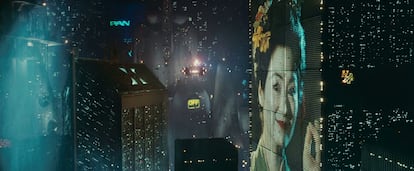

“The sky was the perfect untroubled blue of a television screen, tuned to a dead channel.” This is the opening line of William Gibson’s iconic novel Neuromancer, published in 1984 — the same year George Orwell set his authoritarian dystopia in 1984, with Big Brother watching over all. However, Gibson’s dystopia differed in nature and is widely considered the birth of cyberpunk. In that decade, technology began to infiltrate everyday life, with the emergence of personal computers and video games (Pac-Man debuted in 1980), and capitalism was on the brink of loosening the constraints that had held back its overwhelming power. The genre was born as a rebellious offspring of classic science fiction, envisioning a bleak future that, like a self-fulfilling prophecy, our world increasingly resembles. The late cultural critic Fredric Jameson described cyberpunk as a new realism: “The supreme literary expression, if not of postmodernism, then of late capitalism.”
Neuromancer follows the story of Case, one of the best hackers in cyberspace, who falls from grace after stealing from his employers, who, in revenge, damage his nervous system and his ability to connect. It contains all the classic elements of the genre: massive corporations controlling the world in the face of weak states (now referred to as techno-feudalism), the rise of artificial intelligence in a hyper-technological society, the threats to cybersecurity, and extreme socioeconomic inequality. The cities are dark, fast-paced, dirty, and ruthless, an image of urban decay likely influenced by the urban crisis of the 1970s.
This is the essence of “high tech, low life” — the combination of cutting-edge technology and an increasingly miserable standard of living, because it’s a mistake to confuse innovation with progress. It all feels eerily familiar. “There is no time left to be nostalgic. The turbo-accelerated flow has long since eaten our fried brains on a platter; the first and last lesson of cyberpunk is that it is always too late to go back,” says Federico Fernández Giordano, editorial director of Holobionte Ediciones.
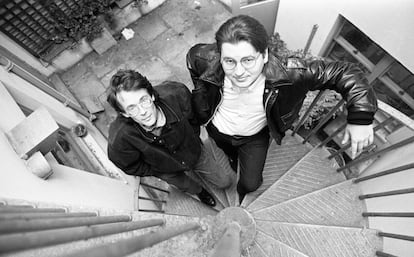
The literary style of Neuromancer aligns perfectly with its themes: a profusion of data that evokes the overload of information, blended with technological metaphors and the relentless pace of a consumer-driven society. “Neuromancer had a devastating impact on science fiction, not only because of its subject matter but also because of Gibson’s way of using language,” says writer Rodolfo Martínez, regarded as a pioneer of the genre in Spain with his 1995 novel La sonrisa del gato (The Cat’s Smile). Other key authors, such as Bruce Sterling and John Shirley, were also fundamental to the genre’s development. The anthology Mirrorshades, edited by Sterling, played a crucial role in establishing this dynamic literary scene in 1986, which was further expanded by works from Neal Stephenson (Snow Crash, 1992) and Richard K. Morgan (Altered Carbon, 2002).
Gibson, who already coined the term “cyberspace” in his 1982 short story Burning Chrome, declined to participate in this report, as he was focused on writing his new novel. He foresaw the emergence of cyberspace more than a decade before it became synonymous with the internet.
“Science fiction does not pretend to predict the future; it only imagines a possible future. [Jules] Verne did not imagine the submarine; he was inspired by existing small submarines. Things have been anticipated, but always based on something that already exists. What has never been predicted, however, are smartphones,” Martínez reflects.
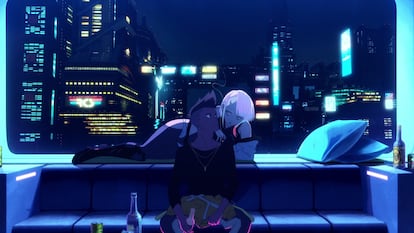
In fact, the original Arpanet network already existed in the 1980s, and computer networks made their way into films, such as War Games (John Badham, 1983), where the protagonist uses a telephone modem to access military computers and nearly triggers a nuclear war, as if it were an online game. The concept of computer networks was already circulating within military, technological, and academic circles at the time.
However, cyberpunk tends to stay close to the present: it doesn’t take place “a long time ago, in a galaxy far, far away,” but almost here, almost now. With its arrival, the techno-utopianism that had fueled much of the science fiction of the second half of the 20th century morphs into a grim nightmare, lurking just around the corner, in a near future that may already be here — like the darker side of the ideology emanating from Silicon Valley.
Neons and pessimism
This pessimistic futurism is set against a dark world that borrows heavily from the noir genre, particularly the hardboiled films of Raymond Chandler and Dashiell Hammett: marginalized characters, outcasts and rebels, nocturnal and decadent environments, constant rain and fog, and a cruel society where everyone is just trying to survive. But it’s all illuminated by neon lights and filled with cables. In this setting, the characters, rather than sporting hats and trench coats, often feature technological modifications to their bodies or minds, and consume more dextroamphetamine than whiskey on the rocks.
“Technology has merged with the body: implants, extreme prosthetics, partially robotic bodies, and the constant connection to cyberspace mark human obsolescence: our minds can be copied, edited, reinstalled, and sold,” explains writer Luis Carlos Barragán, a specialist in horror and new weird science fiction.
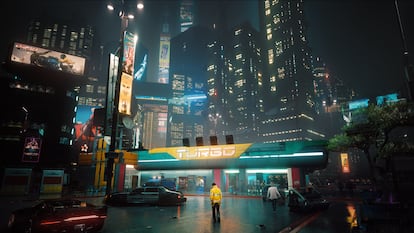
The quintessential cyberpunk film is Ridley Scott’s Blade Runner, based on Philip K. Dick’s novel Do Androids Dream of Electric Sheep?, which laid the visual groundwork for the genre’s aesthetic. In it, policeman Rick Deckard, played by Harrison Ford, is tasked with “retiring” rebellious androids (replicants) who are virtually indistinguishable from humans. These replicants have experienced extraordinary things, though, as the famous final monologue states, their memories will be “lost in time, like tears in the rain.” Interestingly, Blade Runner is more of a cyberpunk precursor than a pure example, as it was released in 1982, two years before Neuromancer. It doesn’t reference cyberspace directly, so many view it as a precursor rather than a full-fledged cyberpunk film.
“Cyberpunk is actually a blend of the atmosphere of Blade Runner and the technology of another 1982 film, Tron, which did explore virtual space,” explains Martínez. A pivotal contribution came later with The Matrix (Wachowski sisters, 1999), telling the story of intelligent machines that enslave humanity by offering a simulated reality. Other notable films include Total Recall (Paul Verhoeven, 1990), in which a worker escapes to Mars from an overpopulated Earth only to discover that his memories have been implanted; Ghost in the Shell (several anime adaptations and a live-action film by Rupert Sanders in 2017), which explores the relationship between the body, mind, and technology through a cyborg police force specializing in cyberterrorism; and Akira (Katsuhiro Otomo, 1988), an anime set in a post-World War III Neo-Tokyo overrun by biker gangs.
In the world of video games, Deus Ex and Cyberpunk 2077 (which takes place in the world of Night City, also featured in the Netflix anime series Cyberpunk: Edgerunners) stand out as essential works. A key influence on the movement was a role-playing game also titled Cyberpunk, created by Michael Pondsmith in 1988. “We have become a dystopian society,” the author remarked in an interview with this newspaper in 2020.
Is today’s world cyberpunk?
“It’s as if cyberpunk didn’t emerge in the 1980s as a dystopia to be avoided, but as a perverse plan that we were meant to complete,” says Barragán. When considering the characteristics of the cyberpunk world — such as the retreat of the state in favor of large corporations, a hyper-technologized society, artificial intelligence, the prominence of cyberspace, rising inequality, and deteriorating living conditions — it’s hard not to recognize the resemblance to our own world. This “realism,” as Fredric Jameson called it, seems all too familiar.
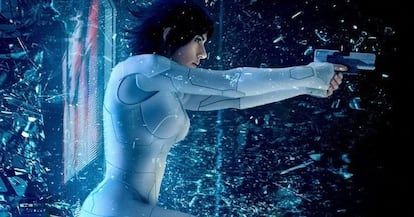
The cyberpunk cities depicted in fiction often have a distinct oriental influence, a reflection of the 1980s’ view of Japan as the epicenter of avant-garde technology, where sprawling megalopolises and robots were expected to dominate. Blade Runner features Japanese restaurants, while Neuromancer takes place in Japan, and Akira is set in Neo-Tokyo.
These cities are filled with neon ideograms, much like today’s rise of Asian-inspired fast food establishments offering ramen and dim sum in the heart of contemporary cities. Cyberpunk cities are busy, diverse, and teeming with people from all walks of life, mirroring the current wave of tourism and globalization. Youth cultures adopt futuristic aesthetics, with fluorescent, metallic clothing and brightly colored hair — clear inspirations from cyberpunk, which tells us what the future should look like. In a sense, the future becomes what we envision it to be.
While our reality increasingly mirrors the cyberpunk world, the outward appearance may not be as grim. The aesthetics are often polished with a layer of sleek design and naive optimism, but perhaps only in the West.
“The world doesn’t seem as pretty in other places,” says Barragán. “You only have to take a walk through the cable-lined alleys of old Delhi, the overpopulated neighborhoods of Lima or Bogotá. The future is already here, it is just not equally distributed.”
The growing disillusionment with capitalism highlights the lack of genuine alternatives, says Barragán, echoing thinkers like Mark Fisher. He also observes the rise of addiction to smartphones and the relentless cycle of hyperproductivity, consumption, and self-exploitation.
“The system has installed itself in our minds, and it operates from there,” he says. “There is no difference with cyberpunk.”
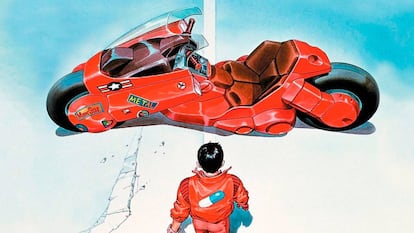
Cyberpunk has significantly influenced contemporary thought, not only shaping the works of thinkers like Jameson and Fisher but also connecting with the ideas of Jean Baudrillard, Nick Bostrom, Franco “Bifo” Berardi, and transhumanist movements. It has intertwined with hacker culture, and the provocative ideas of Nick Land and the Cybernetic Culture Research Unit (CCRU).
As Giordano notes: “The relationship between this genre and philosophy has been one of the most exciting chapters of thought in recent decades. Cyberpunk was an accelerator of philosophy.” He laments that, for a long time, the genre was dismissed as mere science fiction entertainment. “As always, there is a high price to pay for not taking the work of fiction seriously. Or, what is the same, for taking philosophy too seriously and forgetting what is really going on: a cybernetic transformation of philosophy and subjectivity.”
Cyberpunk reveals the dark side of the current system. “I think that the root problem of many evils is the functioning of the capitalist system, which tries to make any technological innovation profitable at any cost,” says Martínez. “Cyberpunk represents that capitalism.”
Sign up for our weekly newsletter to get more English-language news coverage from EL PAÍS USA Edition
Tu suscripción se está usando en otro dispositivo
¿Quieres añadir otro usuario a tu suscripción?
Si continúas leyendo en este dispositivo, no se podrá leer en el otro.
FlechaTu suscripción se está usando en otro dispositivo y solo puedes acceder a EL PAÍS desde un dispositivo a la vez.
Si quieres compartir tu cuenta, cambia tu suscripción a la modalidad Premium, así podrás añadir otro usuario. Cada uno accederá con su propia cuenta de email, lo que os permitirá personalizar vuestra experiencia en EL PAÍS.
¿Tienes una suscripción de empresa? Accede aquí para contratar más cuentas.
En el caso de no saber quién está usando tu cuenta, te recomendamos cambiar tu contraseña aquí.
Si decides continuar compartiendo tu cuenta, este mensaje se mostrará en tu dispositivo y en el de la otra persona que está usando tu cuenta de forma indefinida, afectando a tu experiencia de lectura. Puedes consultar aquí los términos y condiciones de la suscripción digital.
More information
Últimas noticias
Trump traveled on Epstein’s plane ‘many more times’ than previously thought, according to new documents
Venezuelan exiles in Madrid scramble to salvage Christmas plans after flight cancellations
Russian ultranationalism, inflamed by the killing of the hooligan commander ‘Spaniard’
The relentless struggle between factions deepens the Sinaloa war: bodies in coolers and a surge in homicides
Most viewed
- The low-cost creative revolution: How technology is making art accessible to everyone
- Christian Louboutin: ‘Young people don’t want to be like their parents. And if their parents wear sneakers, they’re going to look for something else’
- All the effects of gentrification in one corner of Mexico’s Colonia Roma
- Liset Menéndez de la Prida, neuroscientist: ‘It’s not normal to constantly seek pleasure; it’s important to be bored, to be calm’
- Christmas loses its festive spirit: ICE fears cast shadow over religious celebrations










































